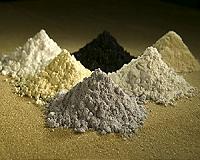 |
Gothenburg, Sweden (SPX) May 10, 2011 Every boat owner recognises the dilemma: environmentally friendly or effective. Researchers at the University of Gothenburg have now found a way of reconciling these two almost unattainable aims. By using smart combinations of the most environmentally friendly biocides in the paint, it is possible to both reduce the total quantity of biocides and dramatically reduce the environmental impact. "It's very easy to make an environmentally friendly hull paint, and just as easy to make an effective hull paint. Yet there is still no paint that is both effective and environmentally friendly, which leaves both environmental authorities and boat owners dissatisfied," says Hans Blanck, Professor of Ecotoxicology at the Department of Plant and Environmental Sciences of the University of Gothenburg. Professor Blanck has directed several sub-projects in the interdisciplinary research programme Marine Paint, which is financed by Mistra. Marine Paint is Sweden's largest combined research programme in the area of marine fouling and environmentally sound hull paints. The project began in 2003 with a substance that had been found to be effective against barnacles: medetomidine. Today the researchers are developing formulas to prevent all types of fouling through what are known as optimised blends of biocides, that is to say substances that can kill or otherwise cause problems for living organisms. "The hull paints of today often contain one or two different biocides, and they need to be highly dosed to eliminate all types of fouling organisms. The idea behind optimised blends is to base them on several complementary biocides in the paint. In this way the combinations make more efficient use of each biocide and less overdosing is needed. We get rid of all fouling and the total need for biocides in the paint is reduced dramatically as a result." To devise formulas for optimal blends, the researchers have developed a system of models in which the effect of different biocides on different types of fouling organisms is weighed up against the expected environmental risk. The result is a set of formulas - with different concentrations and combinations of biocides - that all are equally effective in preventing fouling. What distinguishes them is the anticipated risk to the environment. The formulas can therefore be adapted effectively to different conditions. The substances that the researchers have selected, in addition to medetomidine, are biocides that are on the market today and that will probably pass the ongoing evaluation under the EU Biocidal Products Directive. Another common problem with present-day hull paints is that the active substances leach out too quickly. Large amounts of biocides are therefore needed for the paint to be effective over a long period. "By using what are known as microcapsules, a microscopic bubble of polymer material containing dissolved bioicides, we can control release better. This technique works for virtually any biocide."
Share This Article With Planet Earth
Related Links Space Technology News - Applications and Research
 Chinese pay price for world's rare earths addiction
Chinese pay price for world's rare earths addictionBaotou, China (AFP) May 1, 2011 Peasant farmer Wang Tao used to grow corn, potatoes and wheat within a stone's throw of a dumping ground for rare earths waste until toxic chemicals leaked into the water supply and poisoned his land. Farmers living near the 10-square-kilometre expanse in northern China say they have lost teeth and their hair has turned white while tests show the soil and water contain high levels of cancer- ... read more |
|
| The content herein, unless otherwise known to be public domain, are Copyright 1995-2010 - SpaceDaily. AFP and UPI Wire Stories are copyright Agence France-Presse and United Press International. ESA Portal Reports are copyright European Space Agency. All NASA sourced material is public domain. Additional copyrights may apply in whole or part to other bona fide parties. Advertising does not imply endorsement,agreement or approval of any opinions, statements or information provided by SpaceDaily on any Web page published or hosted by SpaceDaily. Privacy Statement |